Mold on Insulation
Insulation offers immediate and long-term benefits. Energy-saving, carbon footprint reduction, comfort enhancement, and unwanted sound prevention are some of the benefits of home insulation.
But what happens when an insulated home suddenly makes residents cough and sneeze consistently? In most cases, mold spores are in action.
An in-depth understanding of moldy insulation in home areas will assist you in taking immediate and appropriate steps to prevent its spread. And before it penetrates deeper, sit back to learn more.
Worried About Mold on Insulation? Get a Free Inspection!
Mold on insulation can compromise your home’s safety and health. It often goes unnoticed until it’s too late. Don’t let mold cause damage to your home and health! Contact Mold Busters for a free virtual mold inspection. Our experts will provide a thorough assessment and a plan to address any mold issues, ensuring your home is safe and healthy. Act now to protect your space!
Contents
- What is Mold on Insulation?
- Causes and Signs of Mold Growth on Insulation
- What Does Mold Look Like on Insulation?
- What Type of Mold Can Grow on Insulation?
- What are the Health Risks of Mold on Insulation?
- How to Identify Mold on Insulation
- How to Prevent Mold on Insulation
- How to Remove Mold on Insulation
- Frequently Asked Questions (FAQs)
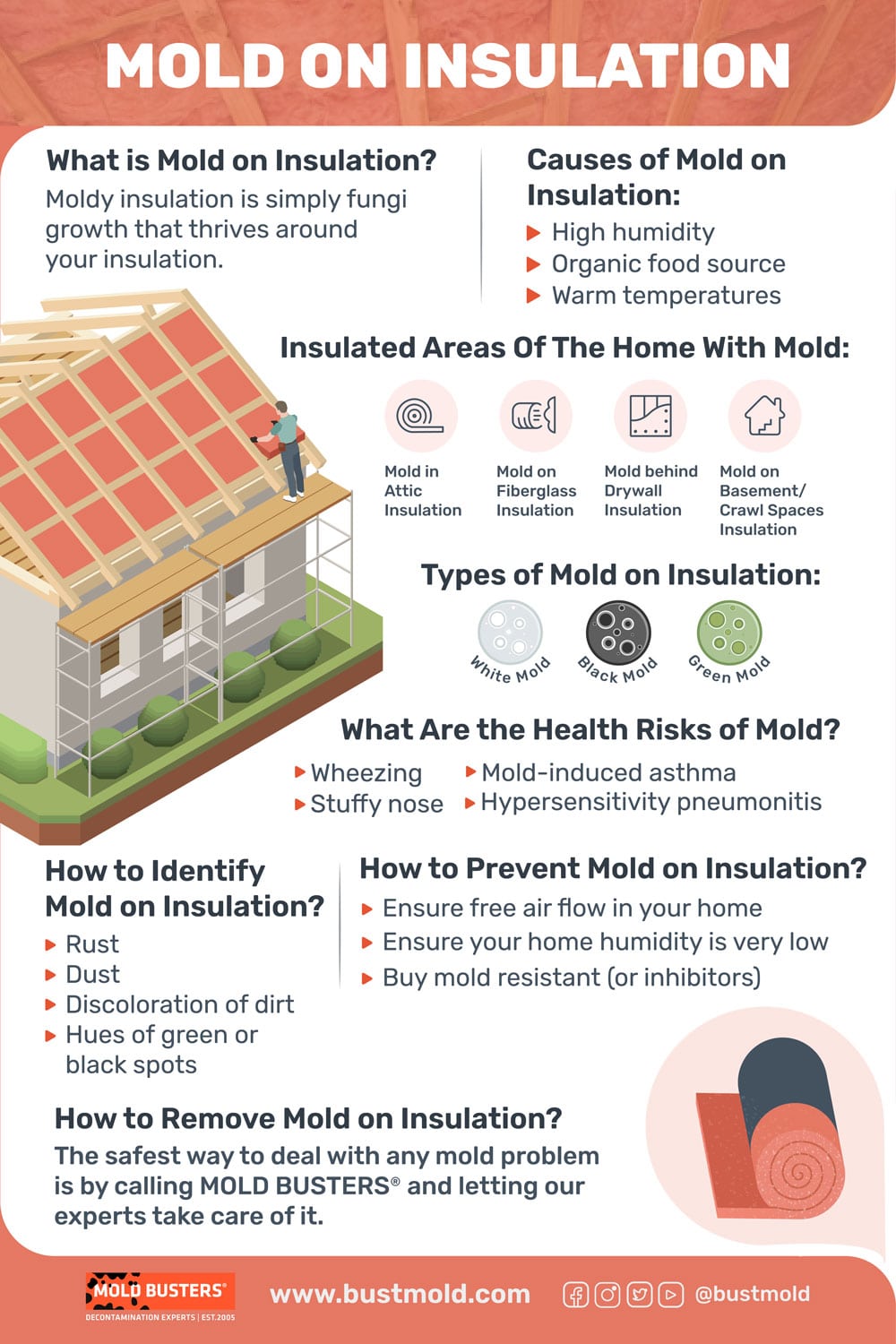
What is Mold on Insulation?
The attic, basement, crawl spaces, and other unseen or forgotten areas of your home can harbor mold. It sneaks into these areas that turn out to be its prime breeding grounds. With insulation, it is essential to ask how mold gets to those areas.
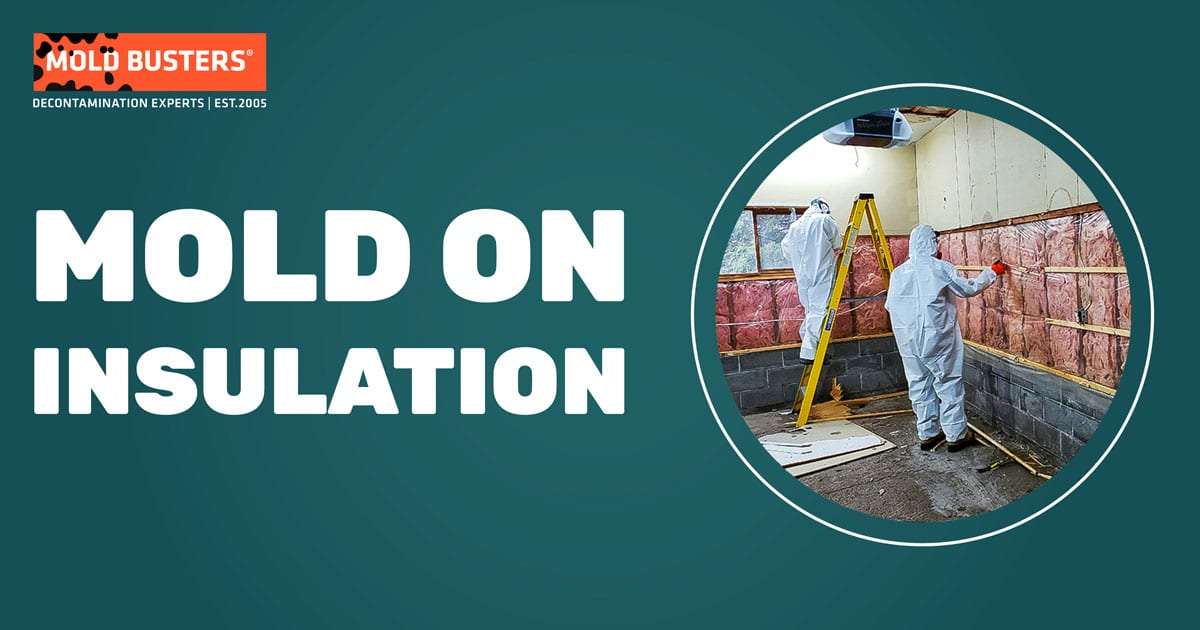
Moldy insulation is simply fungi growth that thrives around your insulation. When mold glue itself to the insulating material, it starts to breed a lifecycle. This could lead to severe health conditions if not quickly spotted and eradicated.
If you’re in the Montreal area and suspect you might have a mold issue, consider reaching out to our Montreal location for assistance.
Causes and Signs of Mold Growth on Insulation
Three decisive conditions encourage mold growth, which are moisture, temperature, and a food source. Moisture is the leading intruder of these three. However, let’s take a further look at the causes and signs of each insulated area of the home.
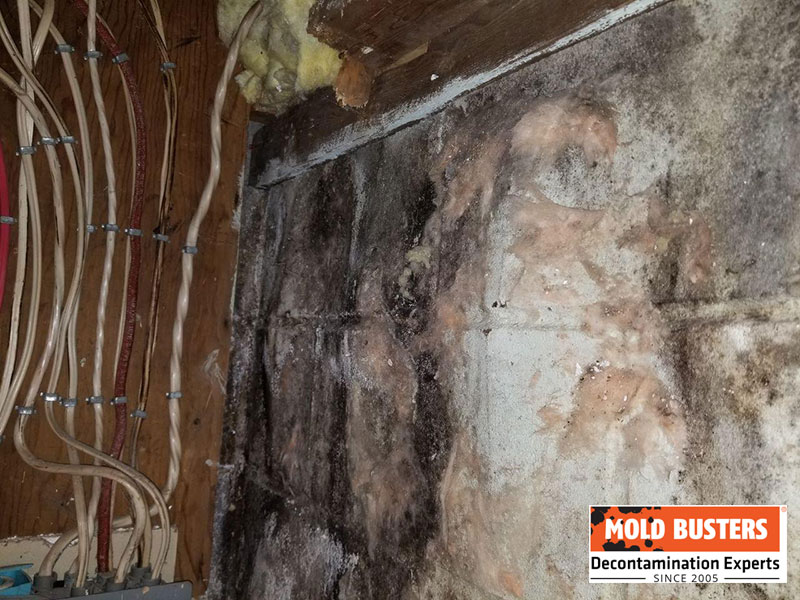
Mold in Attic Insulation
Attics are likely to have the most favorable conditions (humid, hot, and enough food source with wood sheathing) that allow mildew to grow seamlessly. Mold growth continues undisturbed for years as most homeowners seldom go up to their attic. But what are the potential causes of this growth in the attic roof insulation?
- Insufficient or blocked ventilation of the attic space: The attic insulating material sometimes blocks the soffit/eave vents, thereby damaging the complete ventilation system. This makes the warm and humid air in the attic stagnant, which often condenses together with the cold wood sheathing in the winter. The woods trap moisture and become wet and, subsequently, the attic becomes moldy.
- Roof leaks/issues: Mold usually grows around the small, localized area of the attic where the roof leaks.
- Inappropriate exhausting: Both bathroom and kitchen exhaust fans and dryer exhaust vents are designed to pump out moisture from your home. If they terminate moisture into the attic rather than the outside of your home, this could lead to heavy mold growth.
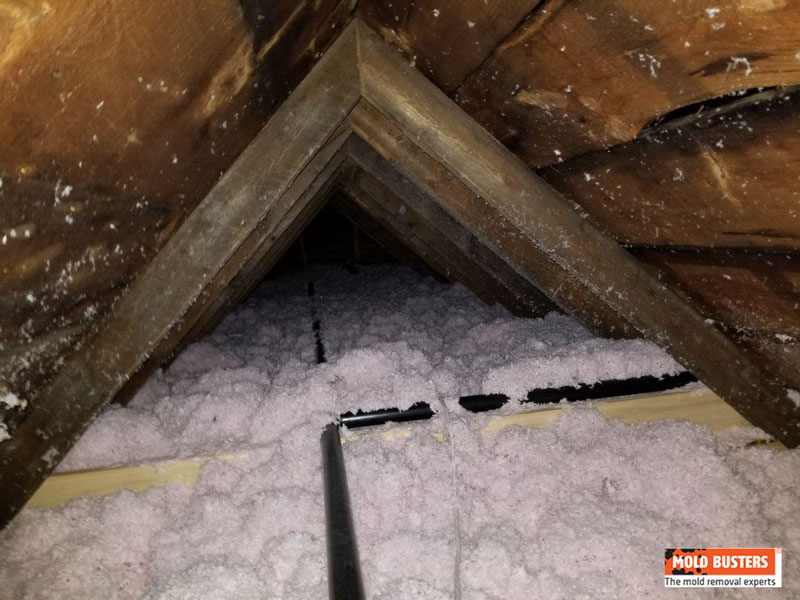
When plumbing stacks terminate inside the attic, it can be a source of condensation. It can also emit hazardous gases, which can lead to its growth in the attic. But how do you know if mold spores are present in your attic?
The tell-tale signs of an attic mold issue include:
- Attic insulation becomes wet
- Dark black discoloration on wood surfaces
- Mildew smell in the attic
- Attic feels excessively hot or stuffy
- Water dripping from bath fans, light fixtures, and smoke detectors
- Frost buildup on the underside of the roof sheathing in winter
Read more information about attic mold removal.
Mold on Fiberglass Insulation
Fiberglass insulation is a composite of finely spun glass fibers. It usually comes as either loose-fill insulation or blanket (batts and rolls) insulation.
Plumbing problems and leaking roofs can create moisture and allow dust and dirt to settle on fiberglass insulation. Since moisture is the perfect recipe for mold growth, it makes the collected particles sediment on the insulation.
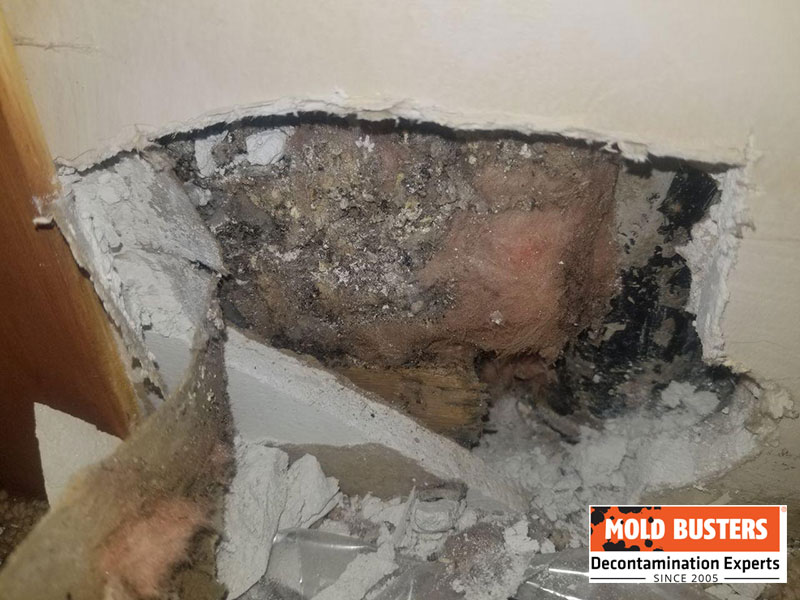
In the wet, dark corners of your building wall (or attic) where the insulation is, fungi start to grow and spread across the loose pieces or batts. As hot air surges in the attic during the winter period, mold problems can arise through condensation from relative humidity levels.
What are the signs of mold growth on fiberglass insulation?
The following alert tells you mold is present in your fiberglass insulation.
- The musty smell gets stronger as you move closer to the insulated wall or attic
- Experiencing constant cold, allergy symptoms, and other health problems
- Observation of black, green, gray, or brown splotches on your fiberglass insulation
Mold on Basement Insulation
Average basement supplies almost everything mold needs to grow, from enough moisture to tasty surfaces to feed on. Some of the factors that can set off issues in the basement include:
- A small leak from the bathroom or water heater
- A critical flood incident
- Rain dripping in through the basement window
- Excess condensation around the doors, concrete floors, cold pipes, and windows
- An overwatered plant pot
- Leaks in your roof and interior and exterior walls
When mold grows in the basement, it can easily find its way around the basement insulation. And when homeowners do not pay immediate attention, it can spread all over the insulation. But what are the signs that mold grows on insulated basements?
Some common signs of mold allergies you may experience in your basement insulation include skin irritation, nasal congestion, wheezing, and eye irritation.
Read more information about basement mold removal.
Mold behind Drywall Insulation
When your drywall hosts moisture, it breeds a source of food for mold, thus creating a comfortable habitat for growth. The spores begin to spread, thereby affecting the drywall’s insulation which makes the home unhealthy.
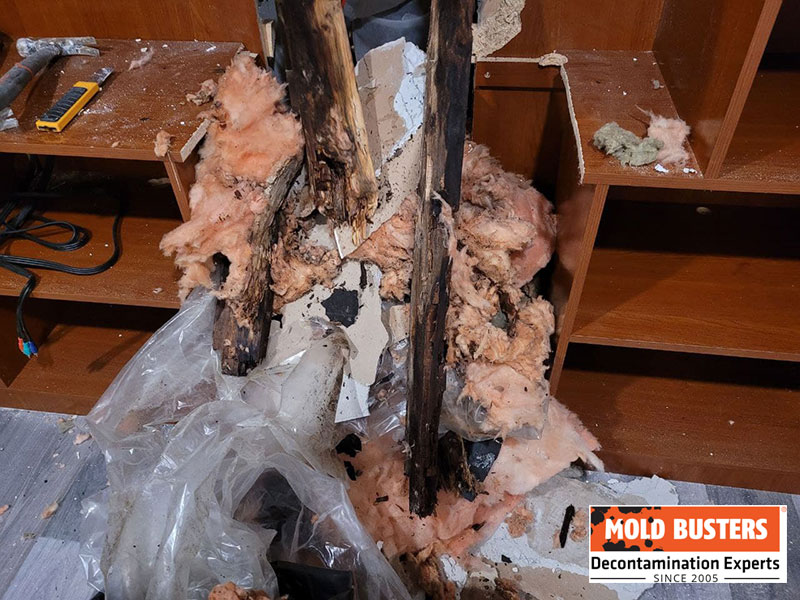
Some of the signs that your drywall is moist and ready to get moldy include dark rings, water stains, discoloration, and deterioration such as bubbling, cracking, or peeling of wallpaper or paint. Some common visible signs of mold on insulated drywall include:
- Rotting walls host mold that may not be noticed in less severe cases.
- Mold exists in a variety of colors and patterns, which could be black, white, brown, gray, or green. Sometimes it even appears as purple, pink, or orange when it develops behind vinyl wallpaper.
- Drywall discoloration also shows that mold is likely to be growing on the wall.
Read more information about drywall mold removal.
Mold in Crawl Spaces Insulation
Homeowners usually forget about crawl spaces until something is taking them there. Often, these spaces are out of sight and tend to be an irresistible home for mold when they are wet. In the long run, it grows and extends to the insulation in the area.
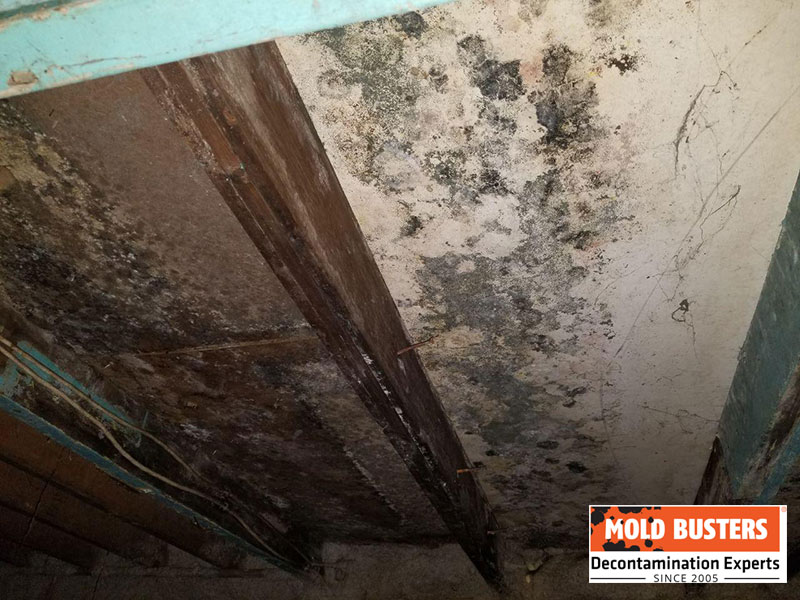
For example, an insulating material like fiberglass in your crawl area will soak up moisture and hold it against the floor joists and sub-flooring. Practical signs of mold in crawl spaces include:
- Awful odor or stale smell
- Greenish or black spots on insulation and walls
- Rotting or decaying beams and joists
- Itching eyes, runny nose, or coughs
Read more information about crawl space mold removal.
What Does Mold Look Like on Insulation?
If you have insulation in any area of your home, you may be wondering how mold looks like on insulation.
Mold has a cottony or woolly appearance on insulation and shades of black, green, or brown. Its spores exhibit morphological characteristics and are sometimes not visible to the eyes. As such, the spores are detected by a microscope.
What Type of Mold Can Grow on Insulation?
The following types of mold can grow on insulation:
White Mold on Insulation
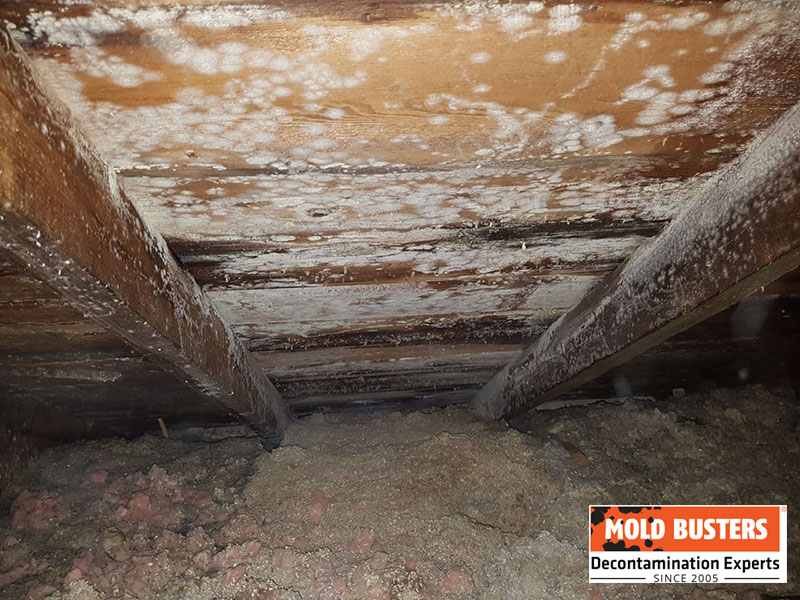
This is a type of fungus that describes several mildew species that appear white. It can be hard to identify white mold due to the color of the species. However, you must quickly spot moldy insulation for immediate removal (read below).
Black Mold on Insulation
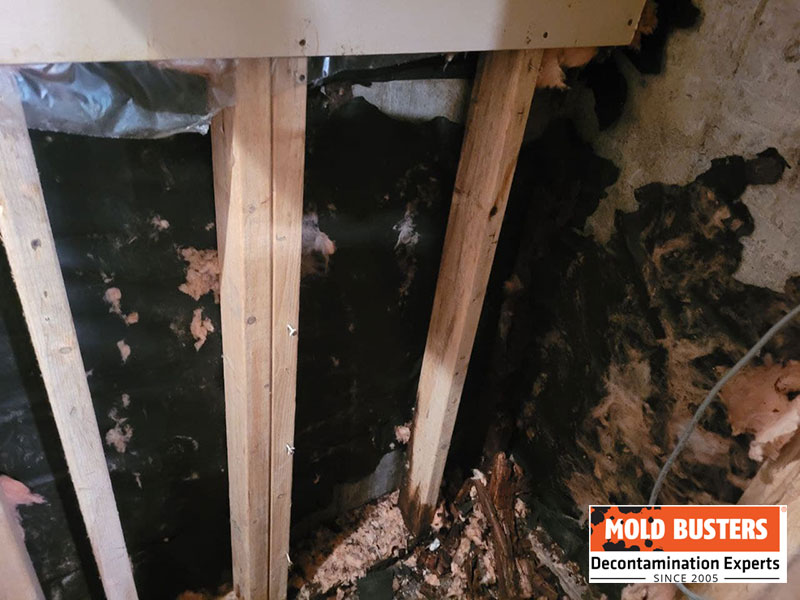
This is another type of fungus that refers to a variety of mold species. They usually have a black or dark green appearance. One familiar example is Stachybotrys chartarum.
Green Mold on Insulation
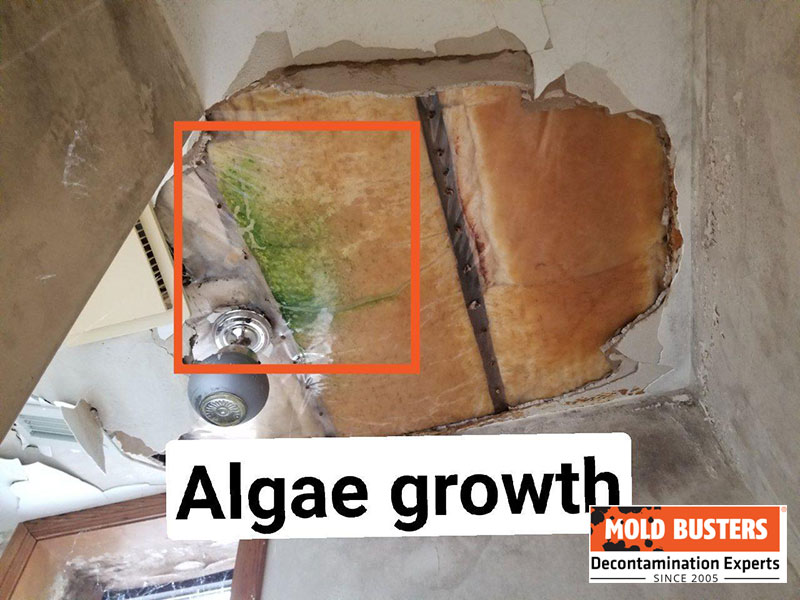
Green mold is common on bread, fruits, and other food types. It refers to different species of fungi growing in shades of green. It also appears powdery or soft and fuzzy and can have diverse green hues.
While most of these species can grow green, the most popular types are Penicillium, Aspergillus, and Cladosporium.
What are the Health Risks of Mold on Insulation?
Not everyone can detect the presence of mold in home insulation. However, some people are sensitive to it when the indoor air quality is detrimental. Such people show symptoms like itchy (or red) eyes or skin, stuffy nose, and wheezing. Individuals with immune suppression and allergies may be more susceptible. These people are at high risk of mold infection.
People with chronic respiratory disease, such as asthma and chronic obstructive pulmonary disorder, may also find it difficult to breathe. If you have any of these conditions, consult a qualified medical clinician for diagnosis and treatment.
Read more about health effects of mold exposure.
How to Identify Mold on Insulation
Whether they are hues of green or black spots, nothing ascertains they’re mold yet. Discoloration of dirt, dust, and rust can naturally be visible on the insulating material in your attic, basement, and others.
Likewise, mold is not always responsible for making you cough, sneeze, or have headaches and persistent odors. So, don’t conclude your observation until you conduct a test! However, these factors are enough evidence to get a test on your moldy insulation – because you don’t want to risk your health in ignorance.
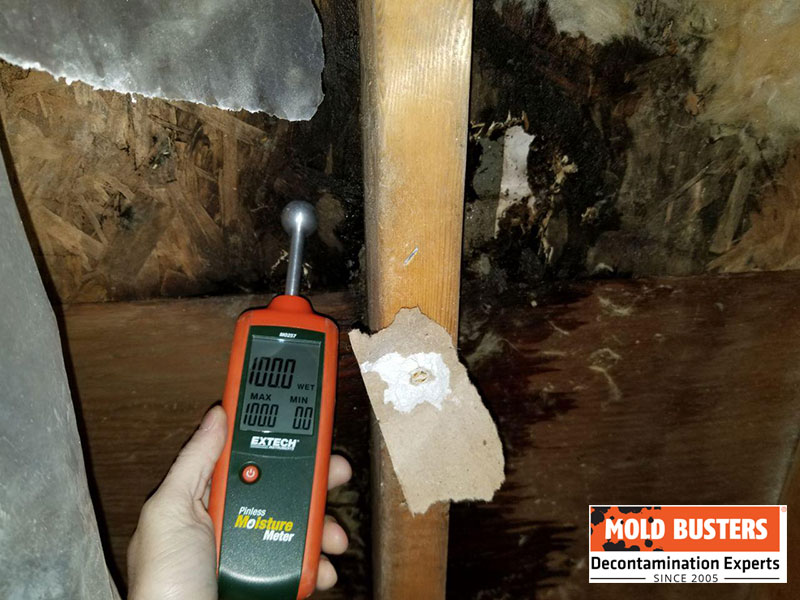
This is where Mold Busters come in, a 24 hours mold testing service with locations in Ontario and Quebec. This test will not only confirm and identify the presence and types of mildew in your home but also help you plan remediation.
Don’t risk the wellbeing of your family in the hands of unqualified mold testers. Let a qualified mold testing company take over – invite Mold Busters today for thorough testing. We guarantee accurate results of your test within 48 hours of your appointment. Therefore, before these fungi eat deeper, call us now!
If you’re in Ottawa, you can also reach out to our Ottawa location for quick and efficient mold testing and mold removal.
How to Prevent Mold on Insulation
You may visualize mold prevention as an impossible task when you consider summer’s usual high humidity level. However, preventing mold growth on your insulation is possible by doing the following.
- Ensure free air flow in your home.
- Whenever flood strikes, dry out your home immediately.
- Insulate your home with a rigid foam board to reduce the amount of moisture buildup
- Ensure your home humidity is very low (not exceeding 50%) throughout the day.
- Buy mold resistant (or inhibitors) and add them to paints before painting your home
- Dry-soaked upholstery and carpets immediately.
- Use closed cell foam to insulate both the interior and exterior of your walls.
Read our ultimate guide about mold prevention.
How to Remove Mold on Insulation
Have you ever tried to remove mold? If yes, did you achieve your intended goal? And after all your efforts, did you have a permanent removal?
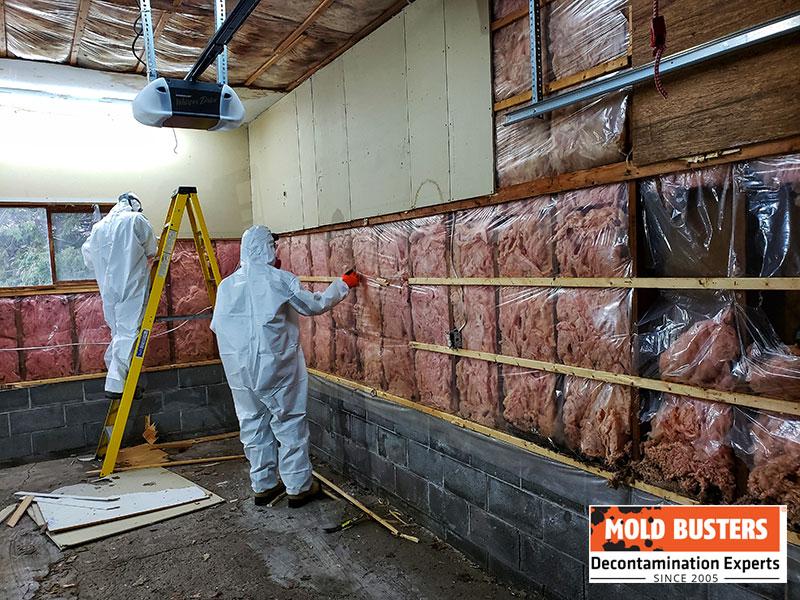
Removing mold may not be as easy as you think. It can be a challenging task for anyone to complete. But do you ever imagine why specialists exist? A certified remediation company will save you money, headaches, and time.
We also offer virtual inspection services for those who prefer an online consultation.
What Should Be Your Priority When Hiring a Mold Removal Company?
Result
Getting results is paramount in every business transaction, no matter the size of your investment. Utilizing a licensed remediation company will ensure an efficient and effective result in the long run.
Equipment
Certified remediation companies invest heavily in buying safe containment and treatment equipment. Utilizing one will save your home a lot from the problems that these hazardous fungi can cause.
Time
Every certified removal company sets its whole day aside to properly deal with the mold in your home while you use your time to get your daily works done.
Experience
A certified removal company has extensive training and education. Their certification is a symbol of trust and the ability to deliver.
Take Away
Whether mold is present in your basement, attic, crawl space, or drywall, remember that it can be risky for your health and that of your family. But irrespective of the signs that you may see, other natural phenomena also exhibit those signs. So, give testing a mandatory step you must take immediately.
Hiring Mold Busters gives you rest of mind and the confidence that your home is in the hands of a professional.
Frequently Asked Questions (FAQs)
Can mold grow on insulation?
Mold does not grow directly on insulation because the insulation is not its food source. However, when your attic or crawl space is attacked, then it will spread to the insulation. And as such, it will start to grow on the insulation.
Is mold in insulation dangerous?
Mold spores exist in the air, lowering the indoor air quality we breathe in. An extensively inhaling is generally harmful to health and for some people, it can lead to respiratory and allergic symptoms.
Should you replace moldy insulation?
A replacement is not the first step, consider removing it instead. So far, no account of a DIY approach has completely remove moldy insulation. So, hiring a certified mold removal service is the best choice you can make – hire Mold Busters.
Can you spray foam insulation over mold?
While spray foam can starve mold its food source (oxygen and moisture), yet it is not ideal to spray foam moldy insulating material. Spraying foam can cause breathing problems at home, thereby adding additional health problems. Also, poor mixing of spray foam chemicals can make insulating material detach from the wall cavities holding it.
If insulation gets wet, will it mold?
The short answer is yes! Once a sizeable portion of your insulating material is wet, mold will start growing on it in a couple of days.

Get Special Gift: Industry-Standard Mold Removal Guidelines
Download the industry-standard guidelines that Mold Busters use in their own mold removal services, including news, tips and special offers:
"*" indicates required fields
Published: August 25, 2021 Updated: June 12, 2024

Written by:
John Ward
Account Executive
Mold Busters
Fact checked by:
Michael Golubev
CEO
Mold Busters
